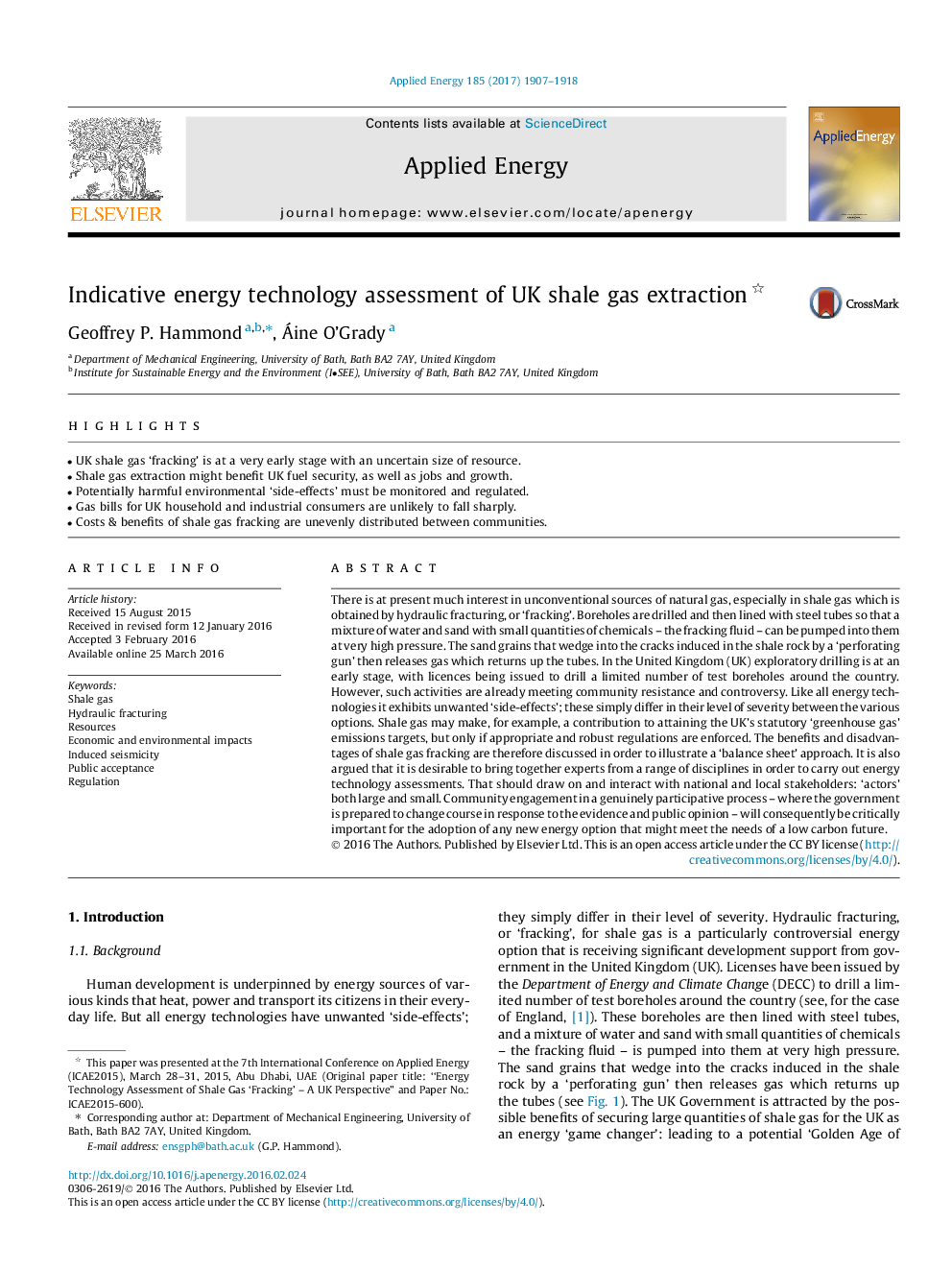| کد مقاله | کد نشریه | سال انتشار | مقاله انگلیسی | نسخه تمام متن |
|---|---|---|---|---|
| 4917123 | 1362739 | 2017 | 12 صفحه PDF | دانلود رایگان |

- UK shale gas 'fracking' is at a very early stage with an uncertain size of resource.
- Shale gas extraction might benefit UK fuel security, as well as jobs and growth.
- Potentially harmful environmental 'side-effects' must be monitored and regulated.
- Gas bills for UK household and industrial consumers are unlikely to fall sharply.
- Costs & benefits of shale gas fracking are unevenly distributed between communities.
There is at present much interest in unconventional sources of natural gas, especially in shale gas which is obtained by hydraulic fracturing, or 'fracking'. Boreholes are drilled and then lined with steel tubes so that a mixture of water and sand with small quantities of chemicals - the fracking fluid - can be pumped into them at very high pressure. The sand grains that wedge into the cracks induced in the shale rock by a 'perforating gun' then releases gas which returns up the tubes. In the United Kingdom (UK) exploratory drilling is at an early stage, with licences being issued to drill a limited number of test boreholes around the country. However, such activities are already meeting community resistance and controversy. Like all energy technologies it exhibits unwanted 'side-effects'; these simply differ in their level of severity between the various options. Shale gas may make, for example, a contribution to attaining the UK's statutory 'greenhouse gas' emissions targets, but only if appropriate and robust regulations are enforced. The benefits and disadvantages of shale gas fracking are therefore discussed in order to illustrate a 'balance sheet' approach. It is also argued that it is desirable to bring together experts from a range of disciplines in order to carry out energy technology assessments. That should draw on and interact with national and local stakeholders: 'actors' both large and small. Community engagement in a genuinely participative process - where the government is prepared to change course in response to the evidence and public opinion - will consequently be critically important for the adoption of any new energy option that might meet the needs of a low carbon future.
Journal: Applied Energy - Volume 185, Part 2, 1 January 2017, Pages 1907-1918